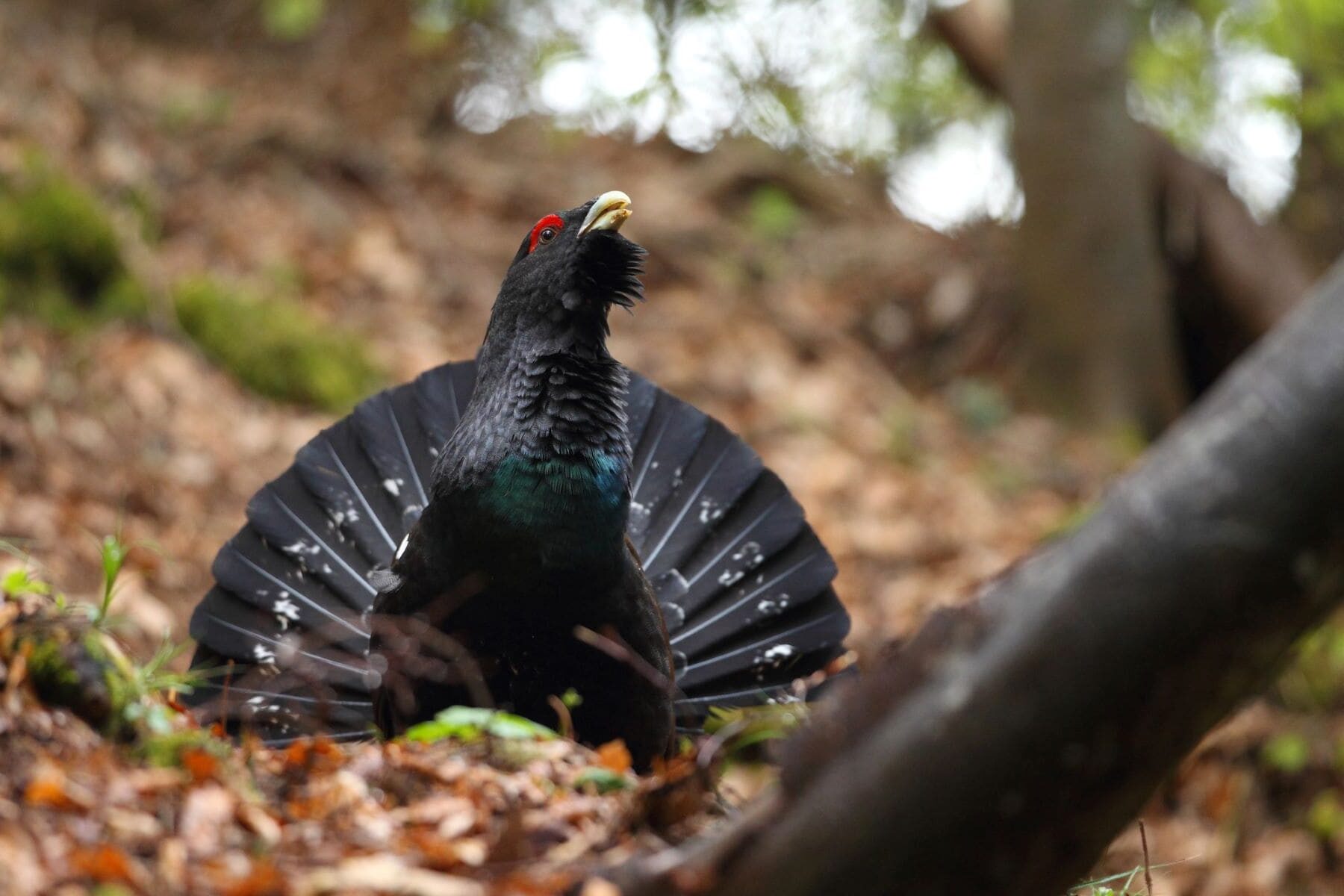He Pyrenean capercaillie and Cantabrian capercaillie are the most primitive subspecies of capercaillie in the world.. The Pyrenees are the southern limit of the global distribution of these species that live in pine forests in the high mountains and feed on shoots of needles, leaves and berries of blueberries.
Capercaillie show a clear sexual dimorphism. Males are black and dark brown with a characteristic red eyebrow. The females are brown in color, 30% smaller and much less showy, because to avoid predators they use mimicry with their environment (leaf litter, branches, etc.). Are Status on the IUCN Red List is ‘endangered’.
A team composed of technicians from the Generalitat of Catalonia and the Conselh Generau d’Aran and scientists from the Animal Health Research Center (CISA)/INIA-CSIC, the University of Murcia, the University of Lleida (UdL) and the Institute Pyrenean Institute for Ecology (CSIC) has discovered this the exhibition of Pyrenean capercaillie (Aquitanian grouse) to veterinary medicinal products.
Capercaillie exposed to drugs
The Pyrenean capercaillie is a sedentary avenue, extremely sensitive to changes in its environment. It lives in some parts of the Pyrenees, in black pine forests with understorey where blueberries are abundant. Annual counts carried out in recent years have confirmed a clear decline in the species, a trend that continues despite the numerous conservation and distribution actions carried out. For this reason, the Pyrenean capercaillie is in danger of extinction, according to the Spanish Catalog of Endangered Species.
In the forests inhabited by the Pyrenean capercaillie, The presence of semi-extensive livestock farming is frequent during the summer and autumn months. To find out whether livestock can introduce veterinary drugs into the capercaillie habitat, the authors of this work looked for the presence of 75 of these compounds in fecal samples from cattle, horses and capercaillie – both chicks and adults, and also in insects. The samples were taken in five forests of the Catalan Pyrenees with the presence of capercaillie and semi-extensive livestock farming, but without agricultural activities or soil fertilization works.
The results showed the presence of antibiotics or antiparasitic agents for veterinary use in all forests examined, in 20% of the samples analyzed. The drugs detected were mainly the antibiotics ciprofloxacin, enrofloxacin, florfenicol and tetracycline, commonly used to treat bacterial infections, as well as the antiparasitic ivermectin. The presence of these medicinal products for use in livestock in the natural environment indicates chemical environmental contamination of human origin. Several studies warn of the presence of drugs in livestock feces, which are often used to fertilize soil. In addition, these medications can be absorbed by plants in some cases enter the human food chain.

Fatal consequences
This is the first study to address environmental contamination by veterinary medicines in subalpine environments, especially in remote areas with the presence of seasonal livestock. According to Carlos Sacristán Yagüe, researcher at CISA-INIA-CSIC and last author of the work, “this study shows how widespread environmental contamination by drugs is, including drugs that can generate resistance to antibiotics and antiparasites that affect invertebrate populations, one of the staple food of capercaillie chickens.”
He The impact of medicines goes beyond the target species. It is still unknown whether intermittent and possibly chronic exposure to the detected antibiotics has adverse effects on capercaillie, but in other birds it has been observed that abuse or overdose of these drugs can cause a decrease in immunity, hepatitis and kidney failure. changes in the gut microbiota or reduction in egg hatchability.
“For this reason, we cannot ignore a possible adverse effect non-target speciessuch as the capercaillie,” explains Olga Nicolás, PhD student at UdL and first author of the work.
On the other hand, numerous studies reveal the impact of ivermectin in a wide range of animals, causing neurotoxicity, endocrine disruption or even death.
Other endangered species
In one of the cattle manure samples, the detected level of ivermectin is above the threshold value causes population declines and loss of biodiversity in invertebratesTherefore, future studies should take into account the effect of this antiparasitic agent on the insect species that inhabit the forests of the Pyrenees and are fundamental pillars in the diet of capercaillie chickens and in the ecosystem.
In addition, numerous studies have shown that ivermectin is a major impact on the coprophagous insect populationslike beetles. These insects are essential for the proper decomposition of feces, and without them the soil becomes a very unproductive place, where nitrophilic plants, which are not palatable to livestock, abound.
The results of the study have been published in the journal Ecotoxicology and environmental safety and they can be great usefulness for designing conservation strategies of the capercaillie. They could also serve to modify the veterinary antiparasitic regimen administered to semi-extensive livestock, making it less ecotoxic, favoring the degradation of drugs present in the feces before pasture fertilization and their curative use of medication is promoted instead of preventive treatment.

